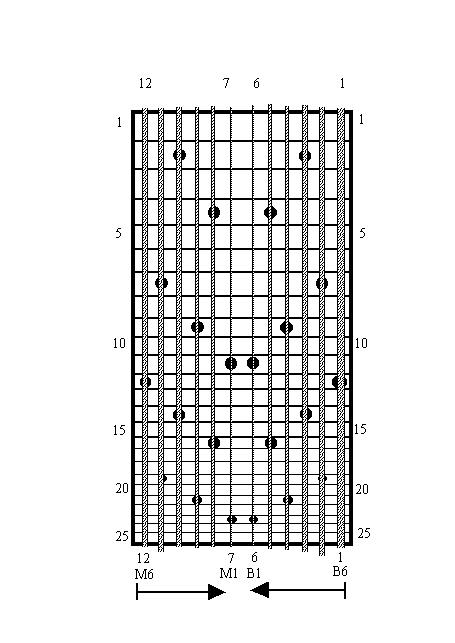 Tuning word: «1>6_bass_4ths_LH // 6_mel_4ths_RH <12 » seen from the player.
Tuning word: «1>6_bass_4ths_LH // 6_mel_4ths_RH <12 » seen from the player.
In this tuning, basses are on the side of the board, while trebles are in the middle. You play ascending scales by bringing hands closer to each other. Advantage of the trebles grouped in the middle: You can see clearly the melodic notes and the higher extensions of the harmony.
Other advantage: For those who, like me, have started to play along Chapman « Free Hands » method, and have done so for a few years, it would be too late to adopt the Daiss tuning, because that would involve a change of all their mental mechanisms. For instance to play an ascending scale in the melody, they move their right hand to their left side. Wolfgang does it by moving his right hand towards his right side. That is quite something to modify if you have been practising for years. Those might better adopt this tuning that I play now, and which was suggested to me by Wolfgang Daiss .
One is getting easily used to the bass strings on the side This has the advantage that the high strings of both sides are grouped in the centre of the board and therefore very visible. It is for instance very convenient for players who like to find sophisticated harmonies. Your instrument should allow for some space on the side of the bass string.
| Table 1-6 The 12-strings mirrored 4th /4th uncrossed hands. Two types of gauges are given, normal and heavy | ||||||||||||
| 12 | 11 | 10 | 9 | 8 | 7 | 6 | 5 | 4 | 3 | 2 | 1 | |
| Bass/Melody | B6 | B5 | MB4 | MB3 | M2 | M1 | B1 | B2 | B3 | B4 | B5 | B6 |
| row 9: | A1 | D2 | G2 | C3 | F3 | Bb3 | Bb2 | F2 | C2 | G1 | D1 | A0 |
| open (row 0) | C1 | F1 | Bb1 | Eb2 | Ab2 | Db3 | Db2 | Ab1 | Eb1 | Bb0 | F0 | C0 |
| Gauge ” normal | .034 | .025 | .016 | .012 | .009 | .008 | .013 | .022 | .028 | .044 | .065 | .092 |
| Diameter: mm | .87 | .64 | .41 | .31 | .23 | .20 | .33 | .55 | .71 | 1.12 | 1.66 | 2.34 |
| Gauge ” heavy | ||||||||||||
| Diam mm | ||||||||||||